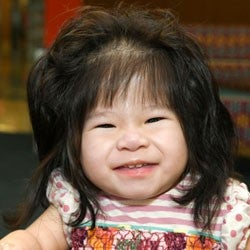Spina Bifida, VACTERL
It’s unlikely Ava Joye Hays will remember her time spent at Children’s of Alabama, but her Beads of Courage will tell the story of a quiet strength and resilience beyond her years. Ava, now in the process of being adopted by husband and wife Matthew and Jennifer Hays of McCalla, Alabama, was diagnosed with limb abnormalities prior to meeting the Hayses. Ava’s pediatrician, Victoria “Tori” Anderson, M.D., of Greenvale Pediatrics Brook Highland, referred her to Children’s main hospital in downtown Birmingham for additional testing. Since that time, Ava has been diagnosed with spina bifida, a birth defect that affects the spine, and VACTERL, a non-random association of birth defects that affects multiple parts of the body. VACTERL is an acronym with each letter representing the first letter of one of the more common findings seen in affected individuals: • V = vertebral defects • A = anal atresia • C = cardiac defects • TE = trachea-esophageal fistula, or persistent connection between the windpipe and the esophagus • R = renal (kidney) anomalies • L = limb defects Babies who have been diagnosed with VACTERL association usually have at least three or more of these individual anomalies. Ava has all seven anomalies of the VACTERL spectrum. Jennifer said she and her family are not only grateful for Ava’s care team at Children’s, but also the team’s seamless collaboration. Ava’s diagnoses require care from a broad range of pediatric specialists, from gastroenterology, hepatology and nutrition to neurosurgery to rehabilitation medicine. This coordinated multidisciplinary approach, Jennifer said, brings a sense of comfort to her and her family. “It’s been a roller coaster because she’s a complicated case,” Jennifer said, “but the doctors and nurses at Children’s have gone above and beyond. There are so many specialists involved in Ava’s care, but they work as a team and make our visits as easy as they can be.” Ava recently underwent a procedure to have a gastro-jejunal, or G-J tube, placed through her abdomen. The tube is an alternate way to give food and fluid to a child because he or she is unable to consume enough by mouth. The procedure earned Ava one of her many Beads of Courage, a national program designed to honor the challenging journey that children take while coping with chronic or life-threatening illness. Ava’s growing bead collection is a symbol of courage and will one day serve as a reminder of all she has accomplished along the treatment path. “When she is older, she will have a tangible way to show her story and what she has gone through,” Jennifer said.







